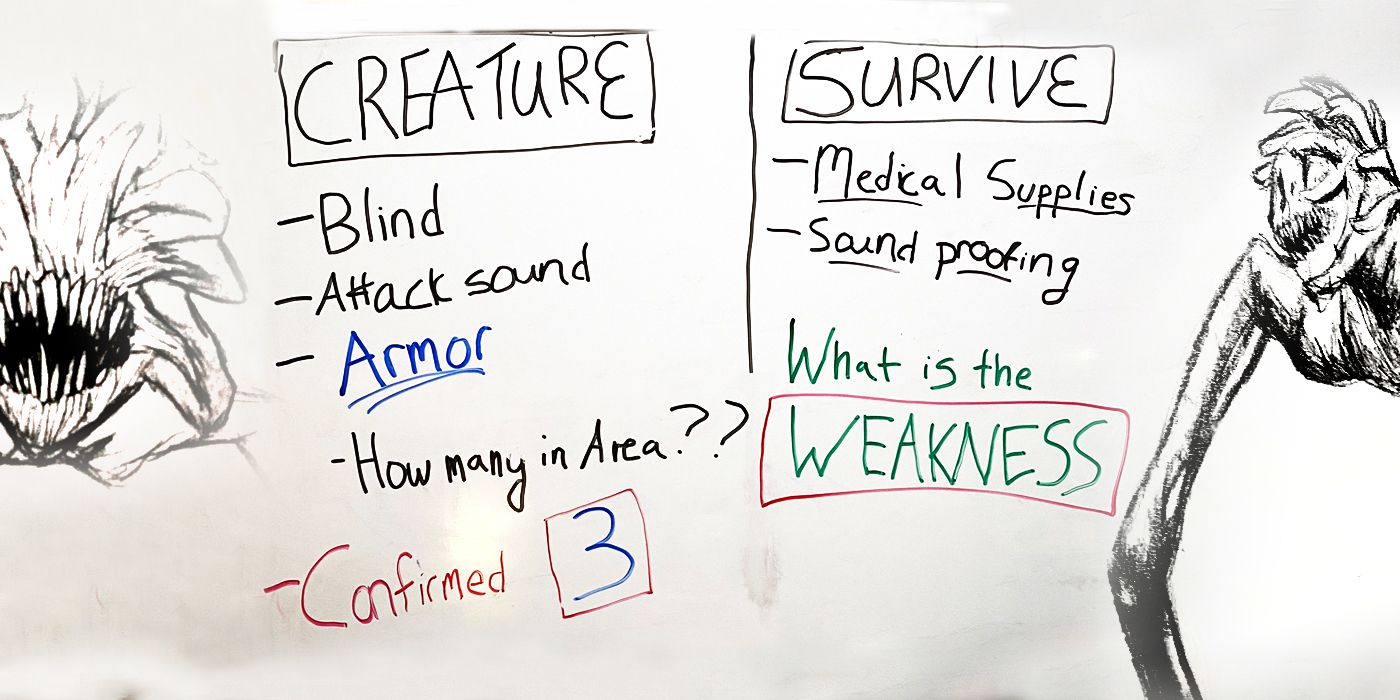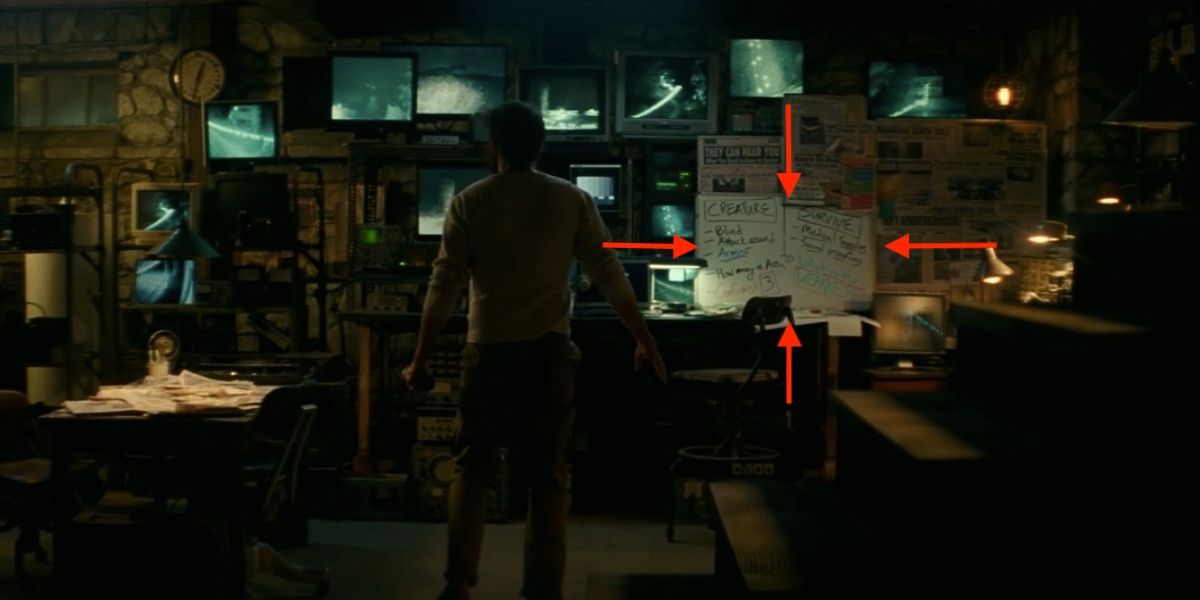Here's the thing about the nonsense to follow: I genuinely believe A Quiet Place has the beefiness to become a classic horror franchise. The first film, a remarkable third directorial effort from former Office bumpkin John Krasinksi, is an all-timer of a movie theater experience, it's weaponized sound design (and lack thereof) turning every enthusiastic owner of a crinkly Twizzlers bag into public enemy number one. In my review of the sequel, A Quiet Place Part II, I called it a "triumph," because Krasinski and Co. took a premise that needed no follow-up and added an astoundingly satisfying amount of layers. It's great. It's all great. However, part of loving film is being obsessed with the minutiae; the set design, costuming, line deliveries, and any of the other one-million-plus decisions that go into making a movie happen. And, sometimes, that means accepting that the minutiae can be very, very funny if you fixate on it to an unhealthy degree. You can be in awe of the original King Kong's influence while also screaming about its aggressively ill-advised 60-minute-long sequel released just nine months later. You can enjoy the Saw franchise while also being haunted by the one time Tobin Bell showed up wearing a backwards hat. And you can think A Quiet Place is a horror masterwork while also being deeply distracted to this very day by the comically unhelpful expository whiteboard hanging in the background of the Abbott family's basement.
Here's the set-up: Earth has been overrun by a vicious race of aliens with super-sensitive hearing, leaving any survivors forced to operate in near-total silence at all times or risk a chompin'. Among those left alive is the Abbotts—Lee (Krasinski), Evelyn (Emily Blunt), and their two children, Regan (Millicent Simmonds) and Marcus (Noah Jupe)—living as close to a tranquil life as possible when you're in constant, soul-shaking fear of accidentally squeaking a floorboard. Lee, an engineer turned apocalypse survivalist, works diligently down in the basement, mostly to repair a hearing aid for Regan, who is deaf. But, when a new inspiration strikes, Lee must also update this whiteboard that gets funnier the longer you stare at it, for the following reasons, presented in no particular order.
- Right off the bat, any substitute teacher in the world can tell you there is no louder means of note-taking than a big whiteboard. Look at the sheer flourish on "Creature." My man would be dead before he finished the "A."
- Actually, keep your eyes on "Creature," and then please picture the 6'3" burly-and-bearded Lee Abbott aggressively jotting down the word "Creature" in dramatically large letters, presumably because he can't scream it like a man in a play about Frankenstein. Picture, if you will, the moment in which he carefully added a square around it, for emphasis.
- Continue your journey down the whiteboard and notice the three notes beneath "Creature": 1) Blind, 2) Attack Sound, 3) Armor. Ponder the ways in which these things are vital information for the audience but a devastating self-own only Lee's part. These are not helpful reminders. It's like scribbling 1) Big, 2) Loud, 3) Missiles?? under the word "Tank." These are the notes of a man who knows he is truly and utterly boned and wants everyone who does laundry in the basement to know this.
- Which leads us to the pièce de résistance of the whiteboard, in which Lee, presumably in a fit of sheer, silent frustration, switched from a neutral, academic black to a frenzied forest green marker to scribble the words "what is the WEAKNESS" in what can only be described as the handwriting of a stranded pirate who has succumbed to ocean madness. It's not so much the content—perfectly valid question to ask about the outer space monsters!—but the context, I.E. the image of this muscular beanstalk of a man vigorously jabbing a rhetorical question onto a whiteboard in absolute, complete silence. It takes up so much of the board, too. It is the main thought. Every time this man loses sight of his North Star ("the WEAKNESS") he can look up to his whiteboard, on which he scrawled "what is the WEAKNESS" with the fury of a 15th-century bread thief counting his days locked in a dungeon, and think to himself: "Oh, right."
Again, none of this detracts from A Quiet Place as a film. If anything, it's proof of a brutally effective little prop orchestrated perfectly by production designer Jeffrey Beecroft and set decorator Heather Loeffler. It clearly draws the eye, and any sane, non-obnoxious mind gets the exact right amount of info from it; some key expository facts about the physicality of the aliens, yeah, but also a non-verbal glimpse into Lee's mental state. It's a portrait, drawn in Sharpie, of a guy trying his absolute best for his family while also aggressively Going Through It.
But also, it is very, very funny. The lesson here is that sometimes a film can seem impenetrable, a perfectly armored horror film without fault or flaw, but there's always a weakness—tiny though it may be—if you take the time to look for it. If only there were some way to remember this lesson? Ah, nevertheless.


